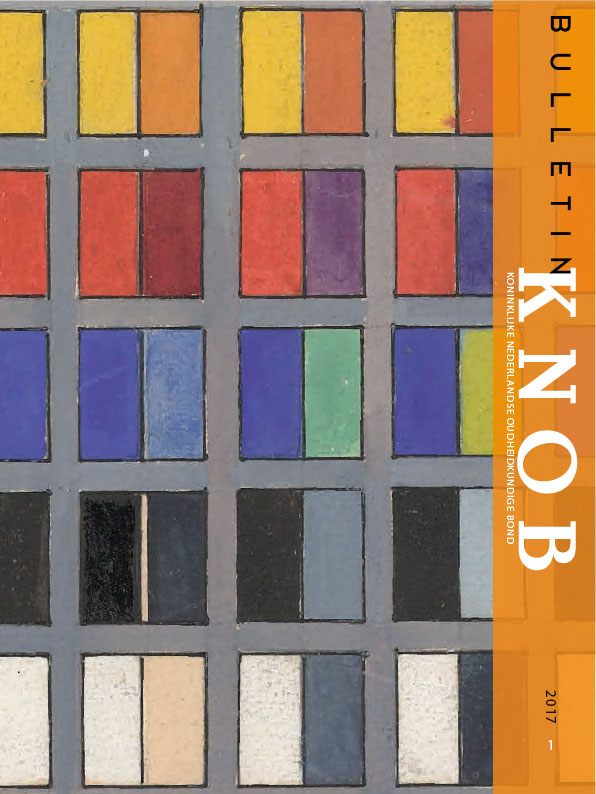Indexering ESCI / Scopus


Elizabeth den Hartog: In gruzelementen. Resten van een Utrechts sacramentshuis uit de Mariakerk van Diemen Jürgen Stoye: 'Stilfarbe' en 'Farbkunst'. De (her)ontdekking van negentiende- en vroegtwintigste-eeuwse kleurtheorie in relatie tot kunstnijverheid, schilderkunst en architectuur Frits Scholten: In de schaduw van Artus Quellinus. Opnieuw Gerrit Lambertsen van Cuilenborch Erica Smeets-Klokgieters: Vrouw in de bouw. De eerste vrouwelijke afgestudeerde architecten in Nederland Publicaties: Yme Kuiper en Ben Olde Meiering (red.), Buitenplaatsen in de Gouden Eeuw. De rijkdom van het buitenleven in de Republiek (recensie Christian Bertram) Eric-Jan Pleijster en Cees van der Veeken (red.), Dijken van Nederland (recensie Guus J. Borger), Ingeborg de Roode en Marjan Groot (red.), Wonen in de Amsterdamse School. Ontwerpen voor het interieur 1910-1930 (recensie Barbara Laan)
In 1989, during excavations of the site of the Mariakerk in Diemen, which was demolished in 1808, over one-hundred-and-fifty, remarkably good quality, architecture and sculpture fragments came to light. They are the remains of an exceptionally refined Sacrament House that was probably destroyed during the Reformation. It was composed of many vertical elements and of painted and gold-leaf-embellished figures. Judging from the style and iconography, it probably originated in Utrecht around 1460/70. The sculpture seems too opulent for a parish as small and impoverished as Diemen was at that...
One hundred years after its emergence, the Amsterdam School still manages to fascinate people with its whimsical forms and bright colours. Although the frame of reference for the forms is known, there has been less interest in investigating the use of colour. The (Dutch) catalogue to the ‘Living in the Amsterdam School’ exhibition touched on the topic visually, noting similarities with German expressionism and the art of Wassily Kandinsky. This article addresses the affinity between the Amsterdam School and painting from the perspective of the investigation of style and ornament from the...
In KNOB Bulletin 115 (2016), Dirk de Vries set about drawing the sculptor and architect Gerrit Lambertsen van Cuilenborch (1597–1657) out of the shadow of Hendrick de Keyser, one of whose chief assistants he had been. In his article, De Vries attributed the ‘Dolhuysvrouw’ (Madhouse Woman) or De Razernij (Frenzy), a statue from the garden of the Amsterdam Madhouse, currently in the Rijksmuseum, to Lambertsen and dated it before his departure for Kampen around 1627/28. Neither attribution nor dating is persuasive, however, and both ignore more recent insights. On...
This article discusses the emergence of the first female architects in the Netherlands and puts it into perspective by comparing it with the emergence of women practitioners in disciplines closely related to architecture, such as furniture and landscape design. Female participation in professions that required higher or university qualifications was far from self-evident in the first half of the twentieth century. This was even truer for technical occupations, which were regarded as a typically male preserve. Thanks to the women’s movement, this gradually started to change. In 1917,...
Review of a book authored by Yme Kuiper and Ben Olde Meierink.
Review of a book authored by Eric-Jan Pleijster and Cees van der Veeken.
Review of a book authored by Ingeborg de Roode and Marjan Groot.


open access mogelijk gemaakt door Stichting OpenAccess
